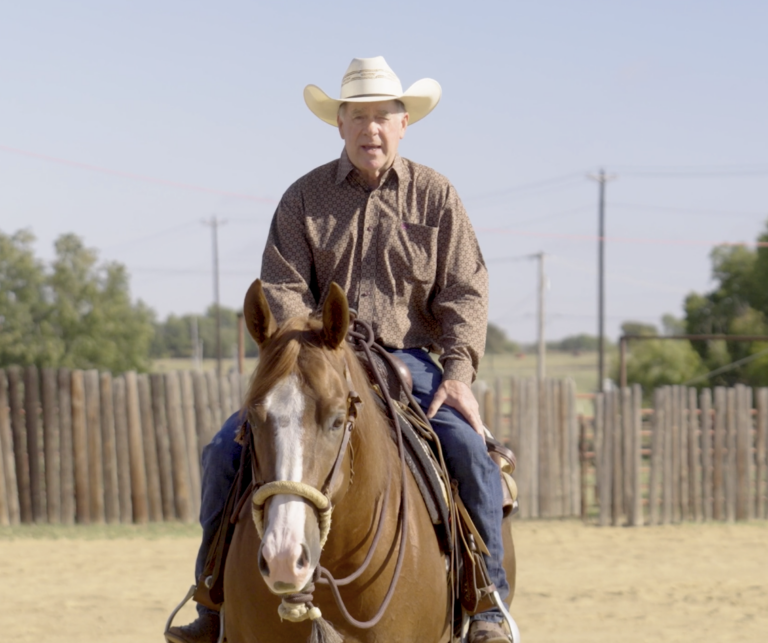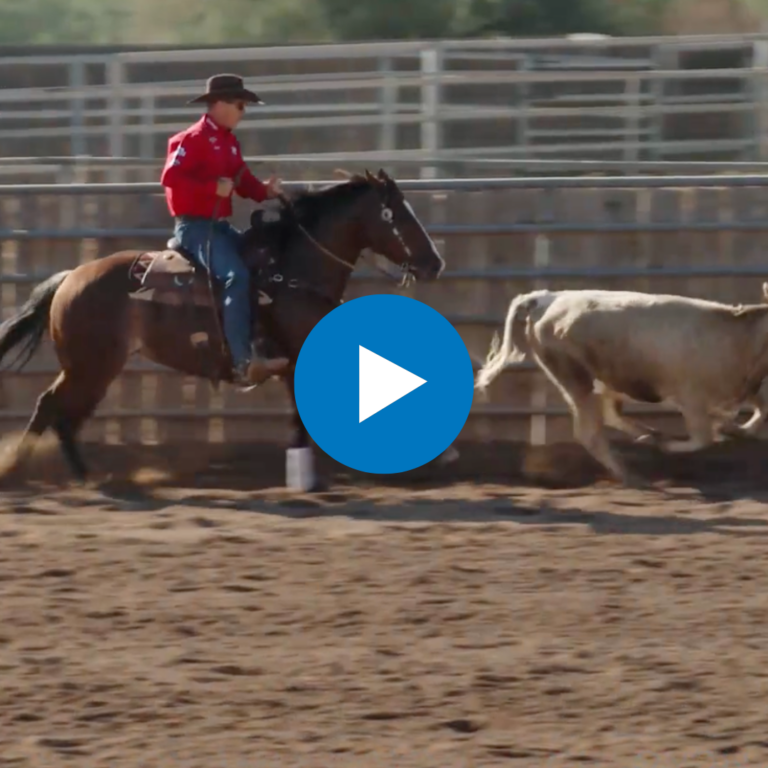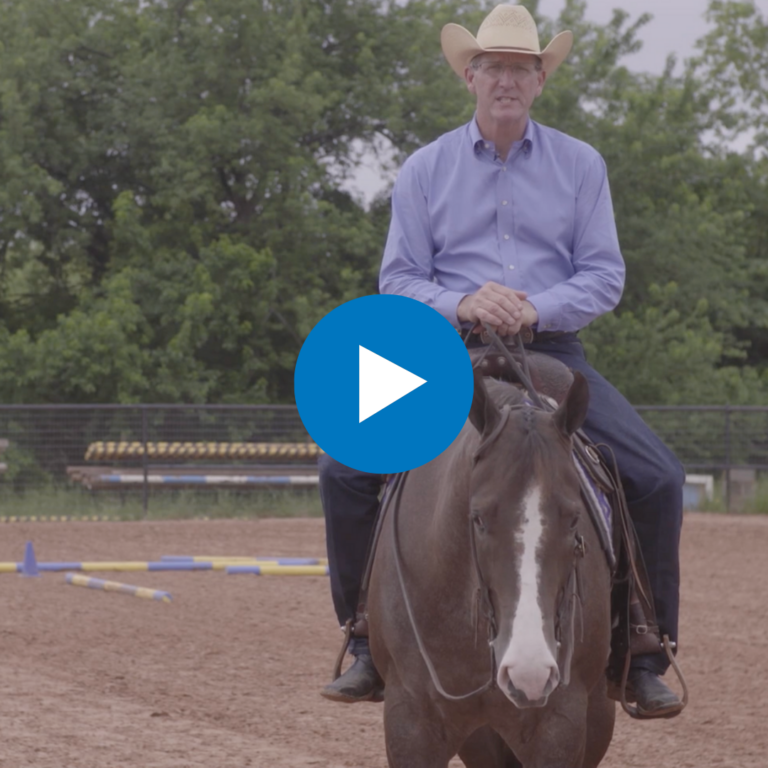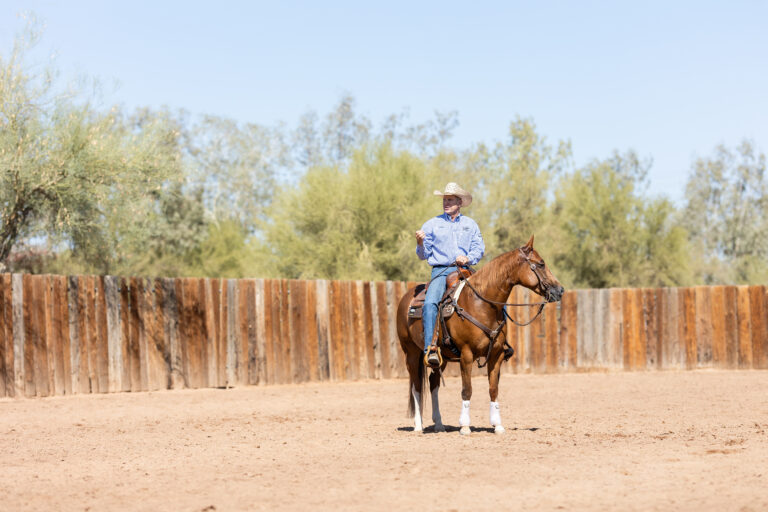Have you seen them? Those never-ending “longeing lines” at some of the larger shows? Exhibitors will be queued up 10 horses deep waiting for a place to longe; some wait at all hours of the day and night for their turn.
And no wonder. Longeing can be an effective tool for exercising your horse and preparing him to show. Still, some of what I see during these longeing sessions makes me cringe. Blunders like an extra person chasing the horse around in a circle. Or a dog running and barking behind the horse. Or exhibitors talking or texting on their phones while longeing.
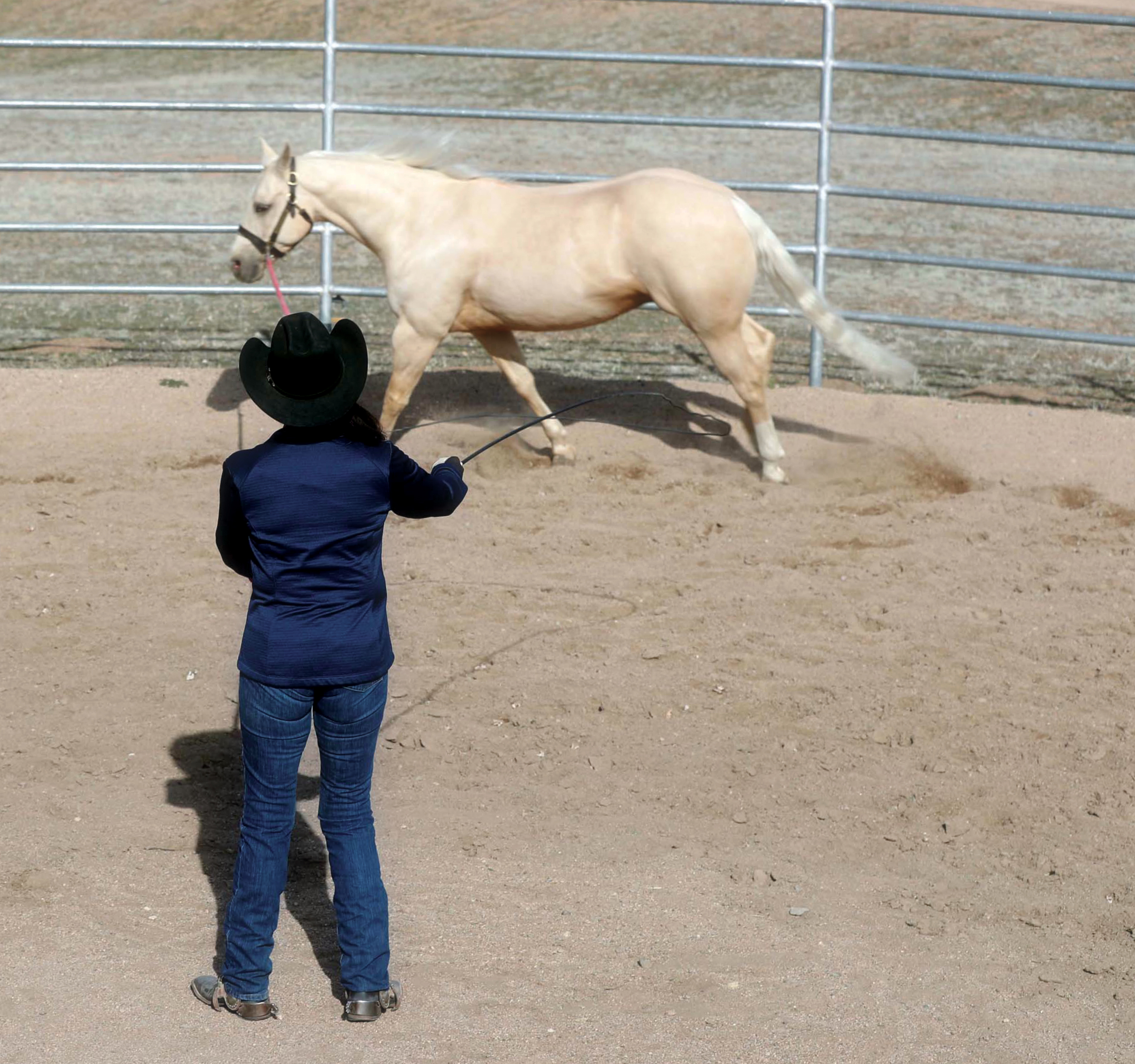
I want to share a more intelligent way to longe. Growing up on a ranch, I was taught that longeing was a necessary part of becoming a good horseman. It reveals any unsoundness you might not be able to feel from the saddle, plus lets you check your horse’s overall body condition.
More important, it enables you to teach and reinforce respect and discipline in your horse, and it hones the connection you should have with him—at all times.
[RELATED: Longe-line runaway? Here’s the solution.]
Time-Honored Tool
Longeing isn’t a modern technique. It’s been used by great horseman in many disciplines for centuries. Longeing is described in detail in the revered volume Riding Logic by Wilhelm Museler, an old-school master of the classical equestrian art—the full understanding of a horse, his mind, and his training.
Longeing is irreplaceable for first rides, cold mornings, show prep, and rehabilitation. (One of the reasons it works so well during rehab is, once a horse has been properly trained to longe, he knows he’s at work and won’t play and push the limits, thus avoiding re-injuring himself.)
It’s also great for conditioning. In 30 days, the spiraling in and out I’ll describe builds a stronger loin and back—especially beneficial for older horses.
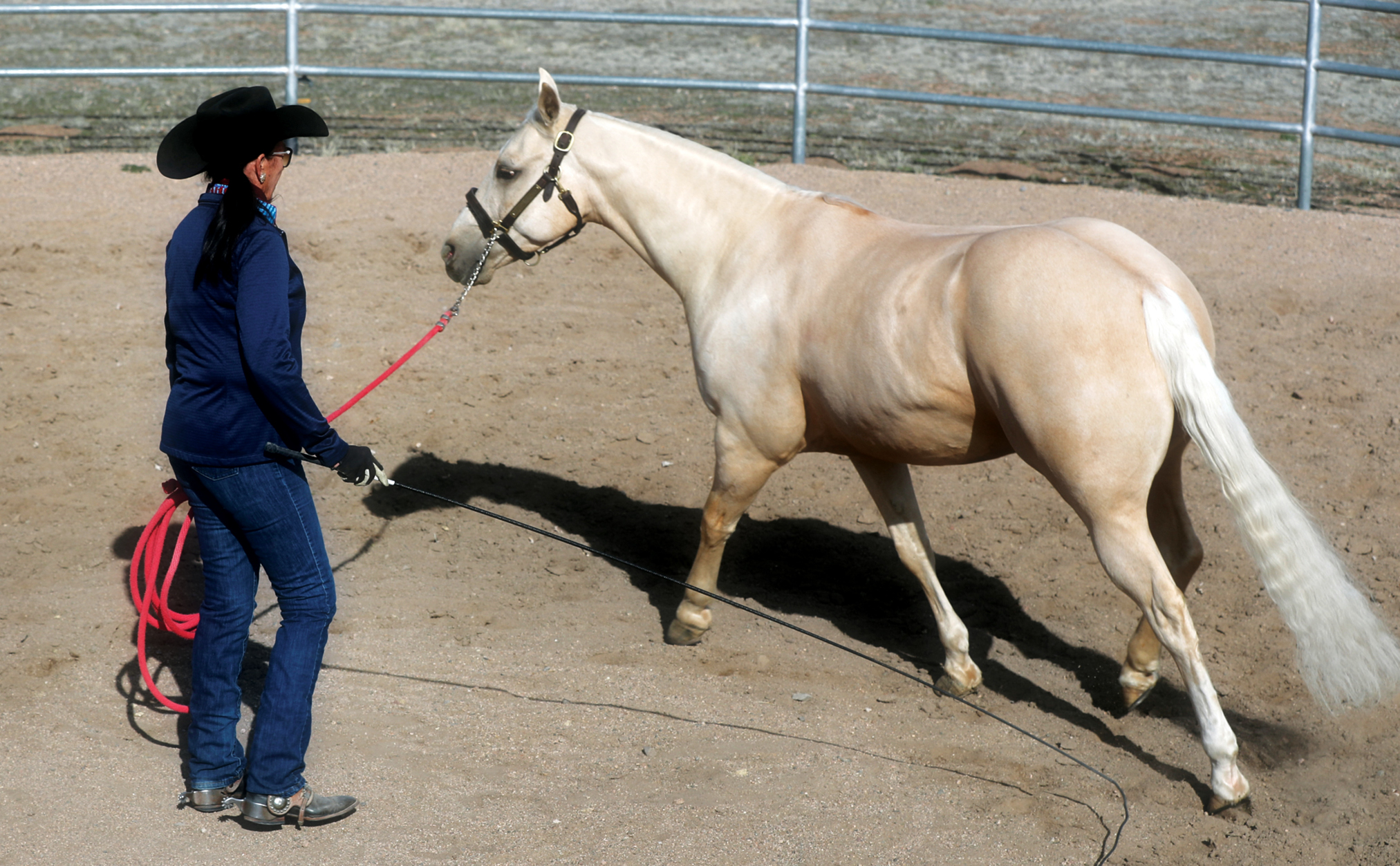
Proper longeing is also a stepping stone for other training techniques, such as bitting up. I take pride in the fact that my horses are so tuned in to me as I longe them that any slight movement or lack of eye contact from me can cause them to break gait or change their stride.
What follows is my version of how to longe a horse effectively. In the long run, following this approach will enable you to spend less time at it while getting more conditioning and training value out of it.
[RELATED: Longe-line runaway? Here’s the solution.]
Get the Idea
First, understand that your horse should consider longeing a job. He starts this job the moment you put a halter on him and head for the round corral or wherever you longe. His mind and body should be engaged with yours from the onset and remain engaged all during the longeing.
The basic concept of how to longe is simple. Picture a wagon wheel in your mind. You are the hub, your horse is the tire, and your whip and longe line are the spokes.
As your horse travels to your left, you’ll hold the longe line in your left hand and the whip in your right. As he travels to your right, you’ll change the line to your right hand and the whip to your left. Practice will enable you to keep the whip functioning as part of the spoke, raising and lowering it as needed.
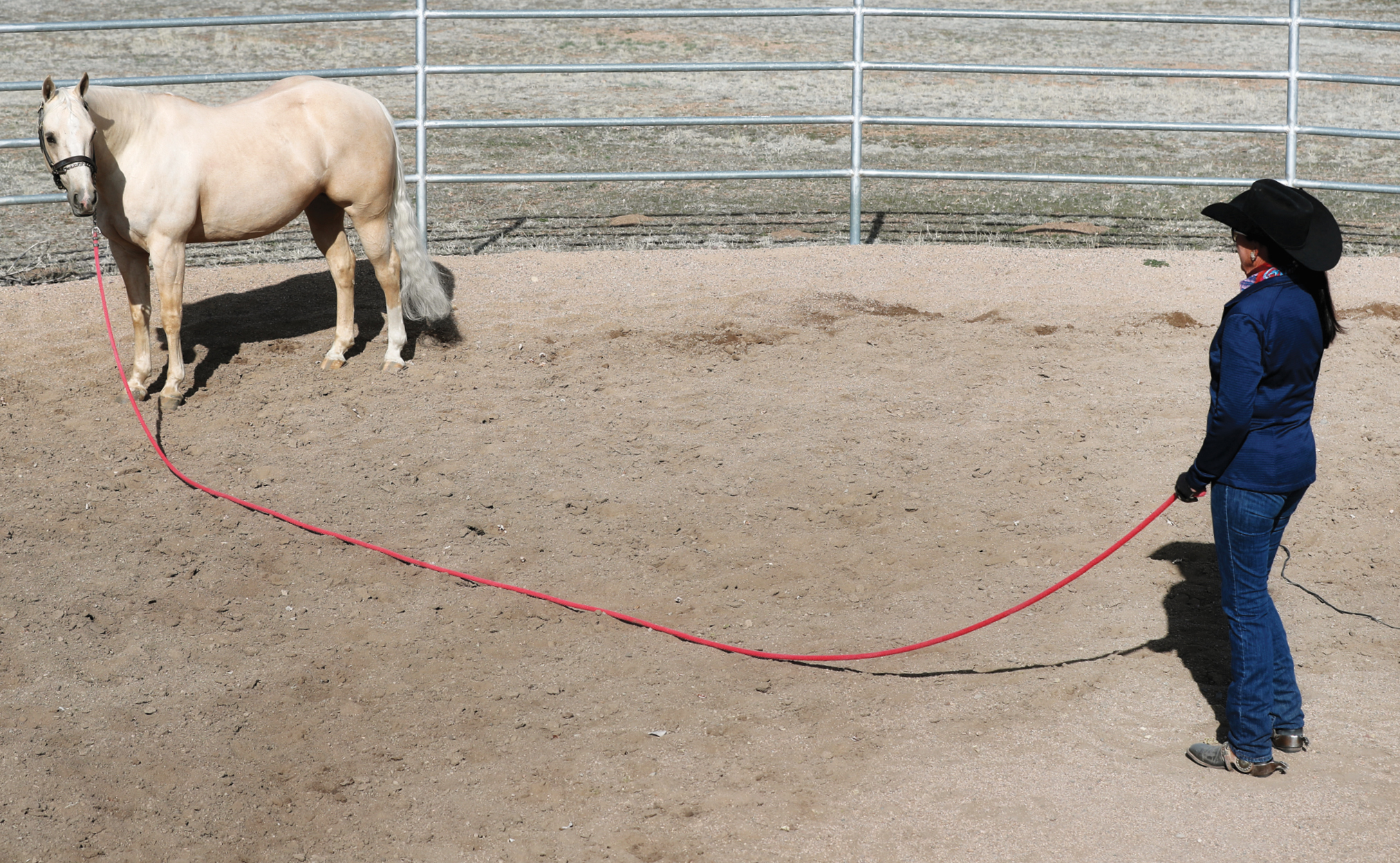
You’ll stand in one place and pivot as your horse goes around you, keeping your body facing his eye—and your eyes on his. To the right, you’ll pivot on your right foot; to the left, your left foot. The goal is to dig a small hole with your heel as your horse circles you.
Start Small
Begin by asking your horse to walk a small circle around you. If he’s never been longed before, give him time to figure out what you want. Use the whip gently to urge him to walk out and around.
Strive to do all of this without moving your feet except to pivot. As your horse gets the idea, it’ll become easier for you to stay in one spot.
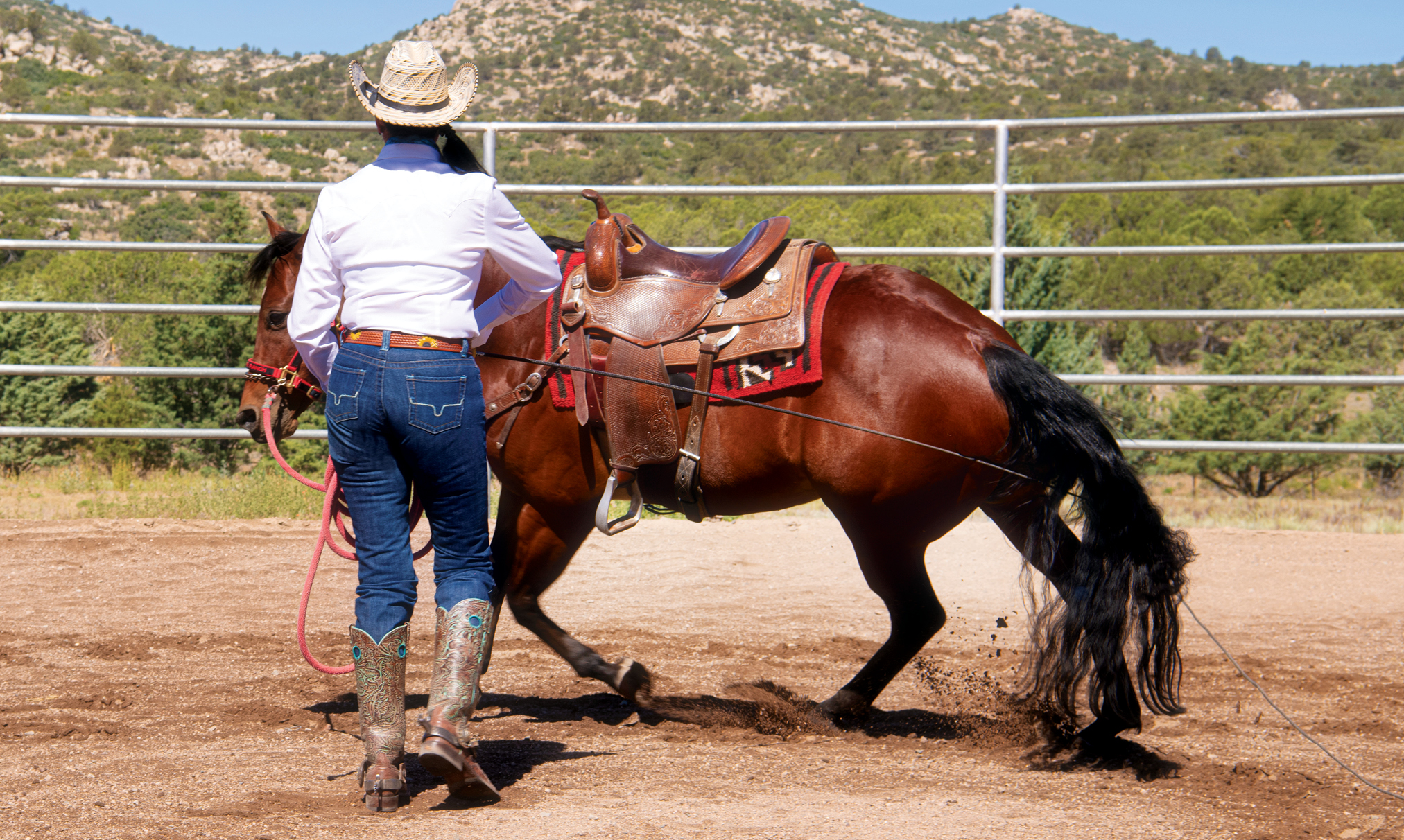
As your horse warms to the task, use the whip to push him out onto a larger circle. Encourage him to walk with purpose while remaining relaxed.
An important part of the exercise early on is training the stop or whoa. Use the line and extend the whip as necessary to let your horse know he must stop and stand quietly still without turning in toward you or entering your space.
Your goal is to teach him that you are in control of his movement. Don’t let him walk in toward you after he stops; always make him wait for you to come to him.
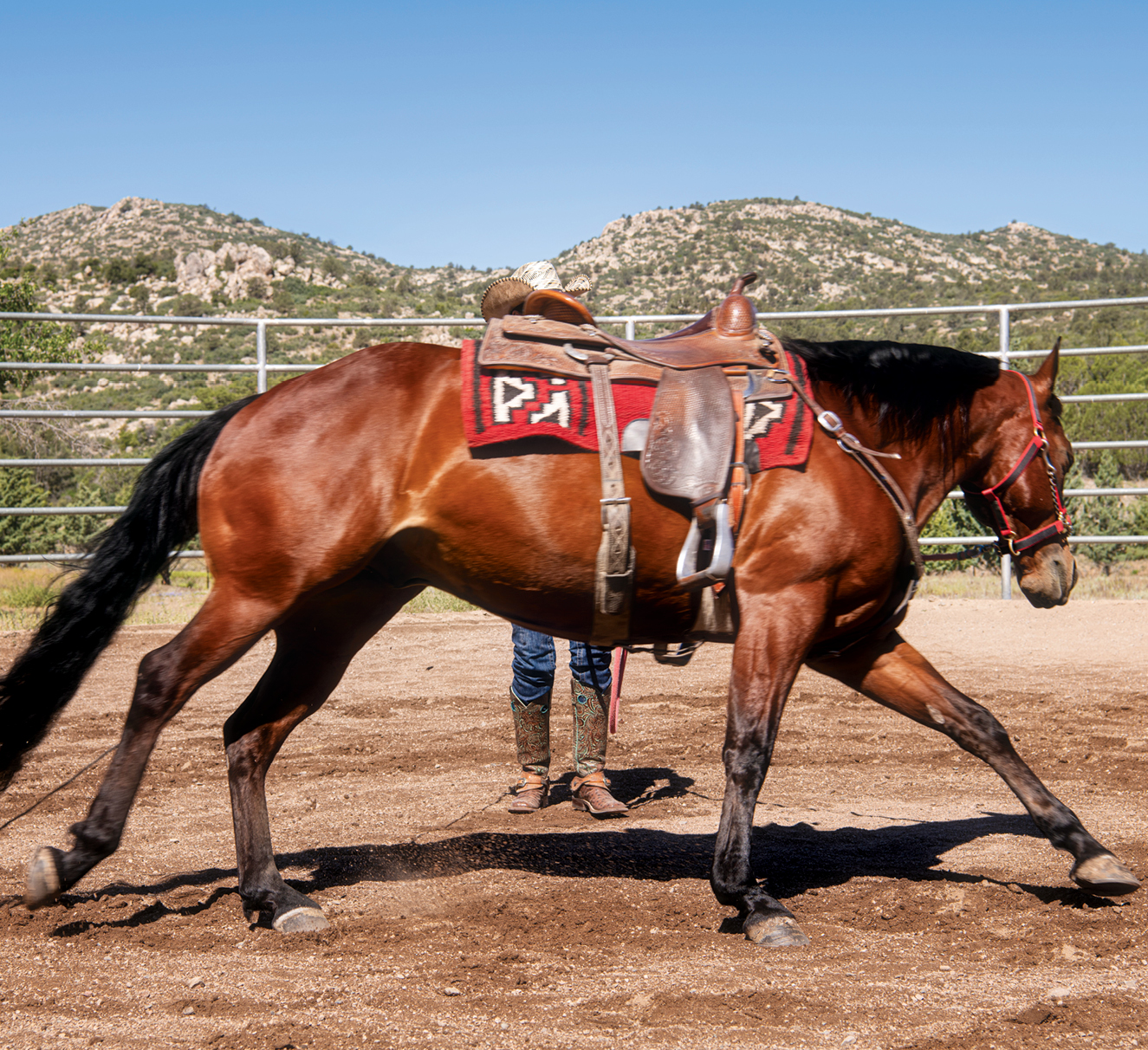
While you’re first training your horse to longe, work him at the walk going both ways, always changing the chain attachment on the halter with each change of direction (see “Chain Attachment,” at bottom). Once he’s proficient at longeing, you can do the walk, trot, and lope work all in one direction, then turn and repeat all gaits in the other direction.
Equipment You’ll Need
Flat halter, nylon or leather.
24-to-30-inch chain to go over your horse’s nose. (See how to attach it at bottom.)
30-foot longe line.
Longe whip, at least 7’6″ long with an additional 7’6″ lash. (Make sure your whip includes an effective “popper” as the noise can become your handy assistant.)
Bell boots and/or polo wraps or protective leg boots are helpful if your horse needs them. (I don’t always use them on my experienced horses whose behavior is more predictable.)
More Gaits, Spiraling
After you’ve warmed your horse up at the walk, move on to the trot and lope. Teach him the words walk, trot, and canter. (I use canter because lope can sound too much like whoa.)
Always make your horse wait for you to ask for the next maneuver. As he learns to wait for your verbal cues, he learns to be patient and not to pull you off your spot in the center of the ring. If he does continue to pull, however, a few quick draws on the longe line will back him off and teach him to soften.
After working at a regular trot, use your whip as needed to encourage an extended trot.
Longeing Dos & Don’ts
Do keep eye contact with your horse at all times.
Do relax the arm holding the line. Lower it to slow your horse and raise it to increase his speed.
Do spiral in and out at each gait.
Do continue to ask for a tighter circle as your horse gets more adept at the spiral.
Don’t ask for a fast gait without first warming your horse up at a walk and jog.
Don’t tolerate pulling on the line at any gait.
Don’t allow your horse to lope on the wrong lead or to cross-fire at the lope (traveling disunited front and back).
Don’t overdo small circles or the total length of time you longe.
Don’t talk on the phone while you longe! Concentrate on doing it right.
Spiral in and out at each gait, shortening and feeding out the line as necessary. (This gets easier with practice.) Spiraling fine-tunes the control you have over your horse plus helps to develop his topline over time.
As when starting anything new, longe your horse in short sessions. In the beginning, two or three minutes each way will be enough to get you both comfortable and begin to build his stamina.
After he’s more accustomed to it, 20 minutes done properly will have him sweating and blowing hard. Your end goal is 10 minutes each direction, a little more if needed at a show. (But never overdo it; too much small circling, especially at a lope, can be hard on legs.)
It takes dedication and consistency to master the proper way to longe, but your horse’s training and condition will greatly benefit from it.
Plus maybe those lines at the shows will get shorter, too!
[WHAT’S NEXT? Try working your horse at liberty!]
Chain Attachment
Attach the chain by threading the snap through the noseband hardware on the halter’s near side, drawing it up over the nose and threading through the same hardware on the halter’s off side, then running it up and snapping it (with snap side out) to the high ring on the off side, as shown.
To avoid too much swinging, avoid using a chain that’s any longer than about 3 inches more than the one in these photos.
Remember to reattach the chain to the opposite side of the halter each time you change directions.
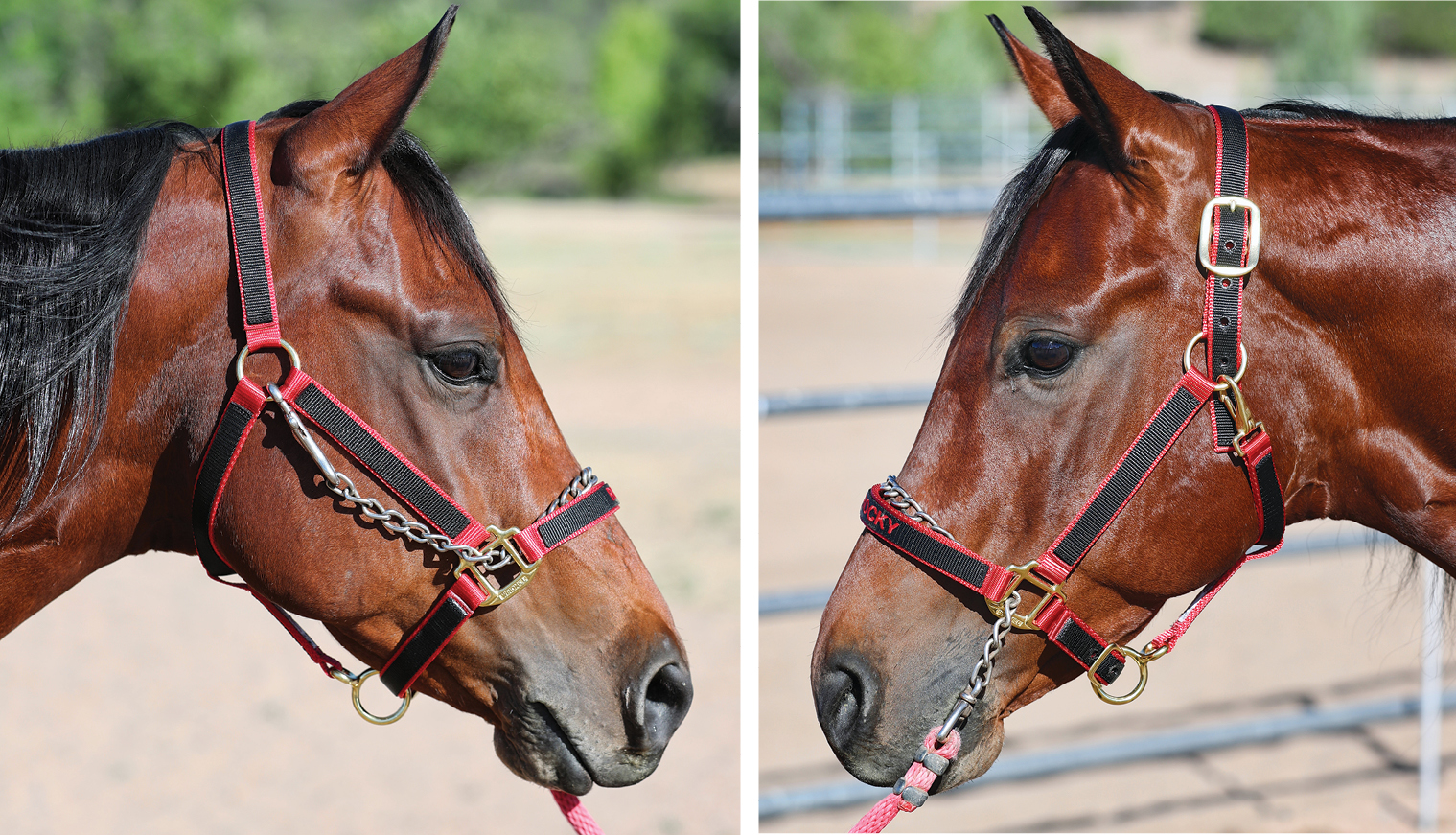
Book: 101 Longeing and Long Lining Exercises English and Western: A Ringside Guide
Intrepid International Splint Boots with Black Patches
Professionals Choice Equine Ballistic Hoof Overreach Bell Boot, Pair
Products we feature have been selected by our editorial staff. If you make a purchase using the links included, we may earn a commission. For more information click here.

